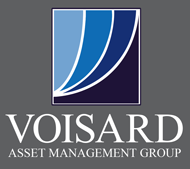Proper estate planning is an important component of your financial plan, as it can help your loved ones avoid an expensive, time-consuming process after you pass away.
An estate plan can also help you:
- Ensure the desired distribution of your assets.
- Minimize taxes, expenses, and unnecessary delays.
- Appoint guardians to care for your children.
- Provide financial security for your family.
- Make provisions in case you become incapacitated.
Step 1 – Take Inventory
No matter how modest, everything you own is considered your estate. Taking stock of what you own is the first step in understanding how best to protect it. To start your estate plan:
-
- List the value of your home and other real estate along with cars, jewelry, artwork, and other physical assets.
- Gather recent statements from your bank, brokerage, and retirement accounts.
- Include the location and contents of any safety deposit boxes or safes.
- Make a list of all insurance policies, noting their cash values and death benefits.
- List all liabilities, including mortgages, lines of credit, and other debt.
Step 2 – Draft Your Estate Plan
Prepare to meet with an estate planning attorney by answering these important questions about how to settle your affairs:
-
- Who should inherit your assets, and in what proportions?
- Who should care for your minor children?
- How much is needed for your children’s care and education?
- Who should manage your financial affairs if you become incapacitated?
- Who should be responsible for distributing your assets?
Step 3 – Put Your Estate Plan Into Action
When you’re ready, meet with an estate planning attorney to draft your will, medical and financial powers of attorney, and trust documents, if applicable. Keep the tips below in mind.
What you can do now:
-
- If you set up a trust, fund it promptly. If you don’t, the agreement won’t take effect, and your assets may not pass to your beneficiaries as you intended.
- Review and update the beneficiaries on all of your investment accounts, if needed.
- Make sure that all assets that you want included in the trust are retitled to reflect this ownership change, and that you keep copies of the relevant documents.
- Once your attorney has created your plan, review your accounts and ensure they have correct titling and beneficiary designations.
Step 4 – Update Your Estate Plan Regularly
Review and update your documents and accounts as your situation changes or as current laws change.
What you can do now:
-
- Keep your beneficiary designations up to date so that your assets will be distributed according to your wishes
This article compiled by our custodian, Charles Schwab, is a great starting point when beginning the Estate Planning process. For more information go to:
https://www.schwab.com/estate-planning/estate-planning-checklist
If you do not have a proper estate plan in place or feel that your estate plan may not be comprehensive enough to cover your wishes, please do not hesitate to reach out to us. We are happy to assist in the process as well as provide an introduction to a trusted contact that specializes in Estate Law.



